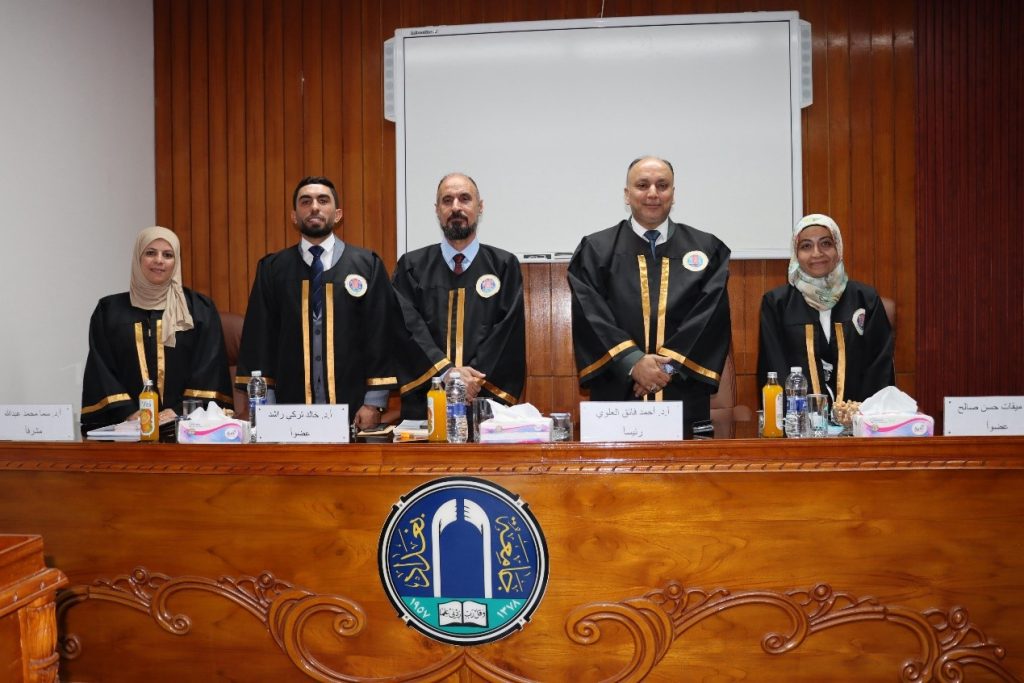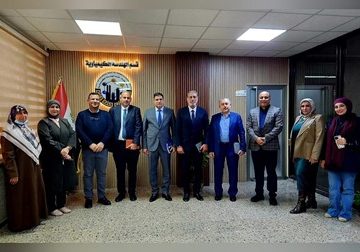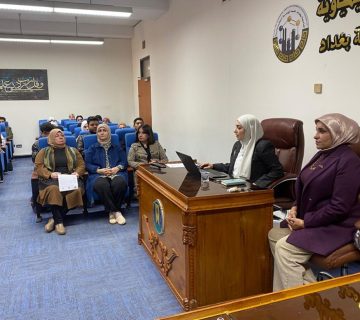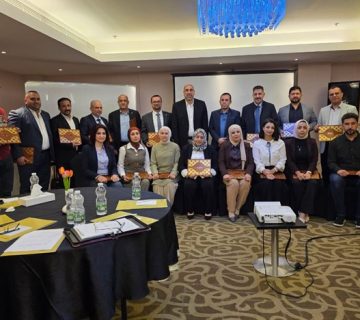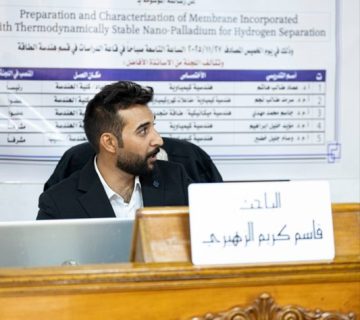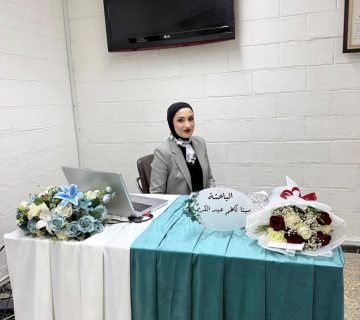The Chemical Engineering Department at the College of Engineering, University of Baghdad, held a M.Sc. thesis examination titled:
“Development of Mixed Matrix Ultrafiltration Membranes for Effective Organic Dyes Removal”
By the student “Abdullah Ghanim Saleem” and supervised by Prof. Dr. Sama M. Al-Jubouri. The examination committee consisted of Prof. Dr. Ahmed Faiq Al-Alawy as Chairman and the membership of Prof. Dr. Khalid Turki Rashid and Lecturer Dr. Miqat Hasan Salih. The thesis was accepted after conducting a public discussion and listening to the student’s defense. The thesis was summarized as follows:
The aim of study:
Developing the MMMs made of PVDF/PEG-SnO2 NPs using phase inversion process to achieve high performance of organic dyes treatment at UF conditions.
Abstract:
Membrane technology shows high performance in the dye’s separation at nanofiltration (NF) conditions. This work studied developing the ultrafiltration (UF) membranes using organic and inorganic additives to remove organic dyes, which are normally removed at NF conditions, to be removed at UF conditions with high effectiveness. Flat sheet UF membranes were successfully prepared by the nonsolvent induced phase separation (NIPS) technique from polymeric solutions containing 16, 18, and 20 wt% of polyvinylidene fluoride (PVDF) and N, N-dimethyl formamide (DMF) as a solvent. The performance of the prepared membranes were tested in terms of pure water flux (PWF), permeate flux, and dye removal (R%) of rhodamine B (RhB) dye at different transmembrane pressures (TMP) of 1, 2, 3, and 4 bar. Different polyethylene glycol (PEG) concentrations of 3, 6, and 9 wt% were used to enhance the hydrophilicity and permeability of the best PVDF membrane at low pressure conditions.
After that, tin oxide nanoparticles (SnO2 NPs) with different concentrations of 0.3, 0.6, and 0.9 wt% were used as inorganic fillers in the best PVDF/PEG matrix membrane to prepare the mixed matrix membranes (MMMs). The field emission scanning electron microscope (FESEM), Fourier-transform infrared spectroscopy (FTIR), water contact angle (CA), atomic force microscopy (AFM), surface charge, porosity, and mean pore size were used to characterize the prepared membranes. The effect of dye concentration and pH of the feed solution on the permeate flux and R% was also investigated. In addition, the antifouling features in terms of flux recovery ratio, reversible fouling ratio, irreversible fouling ratio, total fouling ratio, and the R% were studied using the opportunate PVDF/PEG and PVDF/PEG-SnO2 NPs membranes during the filtration of RhB dye. Molecular weight cutoff (MWCO) was evaluated for the opportunate membranes using RhB as a cationic dye, acid orange 10, and congo red as anionic dyes.
The results showed that the opportunate membranes were the ones contained (18 wt%) PVDF/(6 wt%) PEG and PVDF/PEG-(0.3 wt%) SnO2 NPs. The incorporation of PEG and PEG-SnO2 NPs in the PVDF casting solution reduced the CA from 78.85° to 62.08° and 51.88°. The PWF rose from 7.16 to 74.72 and 135.71 L/m2.h at TMP of 1 bar, while R% slightly decreased from 93.08 to 91.26 and 87.71% for the PVDF, PVDF/PEG, and PVDF/PEG-SnO2 NPs membranes, respectively. The MWCO of the successful membranes were 478 and 520 Da for the PVDF/PEG and PVDF/PEG-SnO2 NPs membranes, respectively. Adding the PEG and SnO2 NPs significantly enhanced the hydrophilicity and permeability of the pure membrane. The concentration polarization on the surface increased with increasing dye concentration, while the pH showed a high performance when the charges of the membrane surface and dye were similar. The PVDF/PEG-SnO2 NPs membrane offered higher antifouling features than PVDF/PEG membrane because it has high hydrophilicity which resulted in high surface resistance to dye molecules adsorption.


